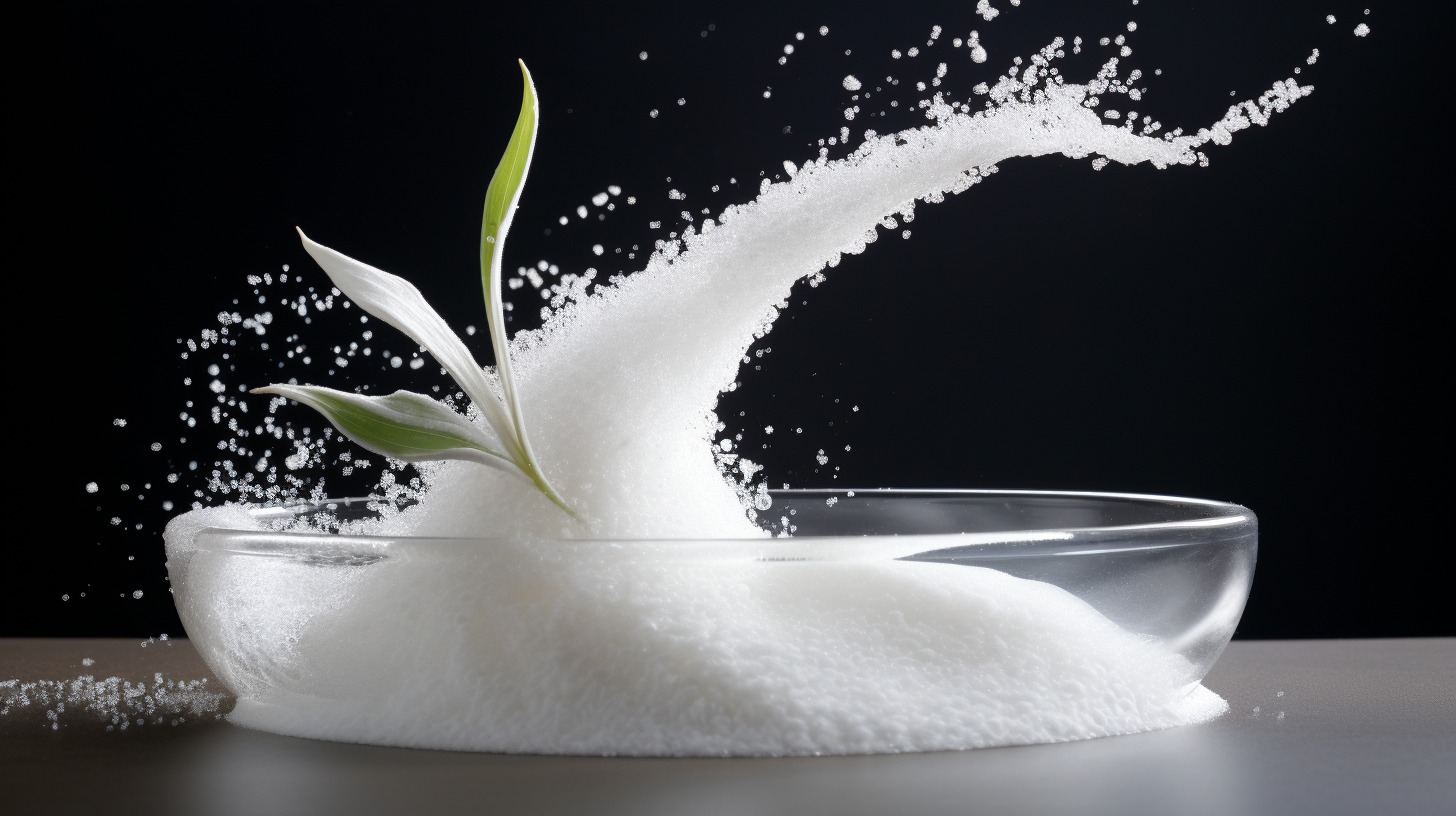I have dedicated my research to understanding how different dietary components, especially sweeteners like Saccharin, influence the risk and management of Type 2 Diabetes.
My goal is to offer insights that are not only grounded in scientific research but also accessible and useful to those who might be navigating the complexities of diabetes management or simply seeking to make informed dietary choices.
Let’s explore the relationship between Saccharin and Type 2 Diabetes, unraveling the myths and presenting the facts.
Saccharin in Diet and Diabetes Management
Saccharin’s role in weight management and diabetes care is significant.
| Benefit | Description |
|---|---|
| Calorie-Free | Saccharin contains no calories, making it a suitable sweetener for weight management. |
| Sugar Substitute for Diabetics | As a non-nutritive sweetener, saccharin does not raise blood sugar levels, making it safe for people with diabetes. |
| Dental Health | Unlike sugar, saccharin does not contribute to tooth decay, promoting better dental health. |
| Heat Stability | Saccharin is stable under heat, making it suitable for use in cooking and baking. |
| Long Shelf Life | It does not react chemically with other food ingredients, ensuring a long shelf life. |
| Helps in Dieting | Being a zero-calorie sweetener, it can be used in various diet foods and drinks without adding extra calories. |
The relationship between artificial sweeteners like saccharin and overall health is not straightforward. There are concerns and ongoing debates in the scientific community about the long-term effects of artificial sweeteners. Some research suggests that consuming artificial sweeteners might lead to increased appetite and food intake.
This could potentially counteract the benefits of these sweeteners in weight management by leading individuals to consume more calories elsewhere in their diet. Another alternative, Xylitol has proven itself effective in this case as well.
Despite these concerns, comprehensive reviews of scientific evidence have shown that finding sugar alternatives with low-calorie sweeteners like saccharin can lead to modest reductions in calorie intake and body weight. This suggests that, when used appropriately, saccharin can be a useful tool in weight management strategies.
Controversies and Recent Studies
The impact of saccharin on blood glucose levels and gut health has been a subject of recent scientific inquiry. While saccharin is marketed as a calorie-free sweetener, some studies, primarily in animal models, have suggested that it might influence blood glucose levels by altering gut bacteria.
These findings have raised questions about the potential metabolic effects and other artificial sweeteners. The applicability of these findings to humans is uncertain, as most human studies have small sample sizes and varying methodologies.
Comparatively, studies on stevia, another popular sweetener, have not shown significant effects on blood glucose levels, making it a potentially safer alternative for those concerned about the impact of saccharin.
Composition and Properties
Saccharin stands out in the world of sweeteners for being a non-nutritive option. This means it provides no nutritional value or calories, making it an ideal choice for those looking to reduce their caloric intake or manage their weight. Remarkably, saccharin is 200 to 700 times sweeter common table sugar.
This intense sweetness allows it to be used in very small quantities, effectively sweetening food and beverages without the caloric load of traditional sugars. Despite its potent sweetening ability, saccharin is often associated with a distinctive bitter or metallic aftertaste, especially when used at higher concentrations.
This aftertaste is a notable difference from other sweeteners like sucralose or agave nectar, which tends to have a taste profile closer to sugar without the bitterness. The varying taste profiles of saccharin and sucralose mean that they are often chosen for different types of food and beverage applications based on the desired flavor outcome.
| Property | Details |
|---|---|
| Chemical Formula | C7H5NO3S |
| Molar Mass | 183.18 g·mol−1 |
| Appearance | White crystalline solid |
| Density | 0.828 g/cm3 |
| Melting Point | 228.8 to 229.7 °C |
| Solubility in Water | 1 g per 290 mL |
| Acidity (pKa) | 1.6 |
Health and Safety Evaluations
The safety of saccharin has been a topic of extensive research and debate. In the 1970s, studies in laboratory rats suggested a possible link between saccharin consumption and bladder cancer, leading to concerns about its safety for human consumption.
This resulted in it being labeled as potentially carcinogenic. However, subsequent research, particularly studies involving humans, failed to replicate these findings, leading to a reevaluation of saccharin’s safety profile.
Today, major health authorities like the World Health Organization (WHO), the European Food Safety Authority (EFSA), and the U.S. Food and Drug Administration (FDA) agree that saccharin is safe for human consumption.
The initial classification as a potential carcinogen has been revised, and it is now considered not classifiable as carcinogenic to humans. This shift in understanding highlights the complexities of translating animal study results to human health implications.
Usage in Food and Pharmaceuticals
Saccharin is widely used in various food products and pharmaceuticals, including baked goods, jams, chewing gum, drinks, tinned fruit, medicines, and toothpaste. Its high sweetness potency means it is often used in small amounts, and it is commonly blended with other sweeteners to mask its bitter aftertaste.
In the food industry, it is valued for its stability and long shelf life, making it a versatile ingredient in many processed foods. The regulatory status has evolved over time. Following the initial concerns about its safety, saccharin was subjected to labeling requirements warning consumers about potential health risks.
As further research dispelled these concerns, these warning labels were removed, and saccharin was reaffirmed as safe for consumption by regulatory bodies like the FDA. Today, it is one of several FDA-approved artificial sweeteners and is also approved for use in Europe and many other countries.
Potential Side Effects and Precautions
While the link between saccharin consumption and cancer risk has been largely disproven, there are still considerations and precautions to be aware of. Saccharin belongs to the sulfonamides class of compounds, which can cause allergic reactions in some individuals.
These reactions can range from headaches and breathing difficulties to diarrhea and skin problems. Due to these potential allergic reactions, some health groups recommend limiting the use in certain populations, such as infants, children, and pregnant women.
While these recommendations are made out of caution, they reflect the ongoing need to balance the benefits of saccharin with its potential risks.
FAQs
Does Coca-Cola use saccharin?
Coca Cola has used saccharin in some of its products, particularly in diet and zero-calorie beverages. The specific use can vary depending on the product and the market. For instance, in the United States, Diet Coke originally used a blend of saccharin and aspartame, but later formulations have primarily used aspartame alone.
Why is saccharin controversial?
Saccharin has been controversial for several reasons. Initially, it was due to health concerns raised by early animal studies suggesting a possible link to cancer, specifically bladder cancer in rats. Although these concerns have been largely alleviated by further research, saccharin, like other artificial sweeteners, continues to be a subject of debate.
Are artificial sweeteners more likely to cause diabetes?
Current scientific evidence does not conclusively show that artificial sweeteners like saccharin directly cause diabetes. These sweeteners are often recommended as a sugar alternative for people with diabetes because they do not raise blood sugar levels. The relationship between artificial sweeteners and diabetes risk is complex and not fully understood.
Summary
My extensive research and experience have led me to a number of conclusions. In my opinion, moderation is key.
For instance, while it offers the benefit of being a zero-calorie sweetener, concerns have been raised about its potential impact on health, particularly regarding Type 2 Diabetes.
It can be a useful tool for reducing caloric intake and managing weight – both important factors in Type 2 Diabetes risk reduction – it should not be relied upon as the sole strategy for diabetes prevention or management.
A balanced diet, regular physical activity, and, where necessary, medical guidance are essential components of a holistic approach to reducing the risks.
Related Posts:
- 10 Best Sugar Substitutes for People With Type 2…
- Difference Between Saccharin and Sucralose: An…
- Does Wild Growth Oil Really Work? - An Insight
- How To Wash a Weighted Blanket in 2024 - A Detailed Guide!
- Social Learning Theory - A Detailed Guide
- How to Oil Your Hair Effectively at Home - A Detailed Guide
















